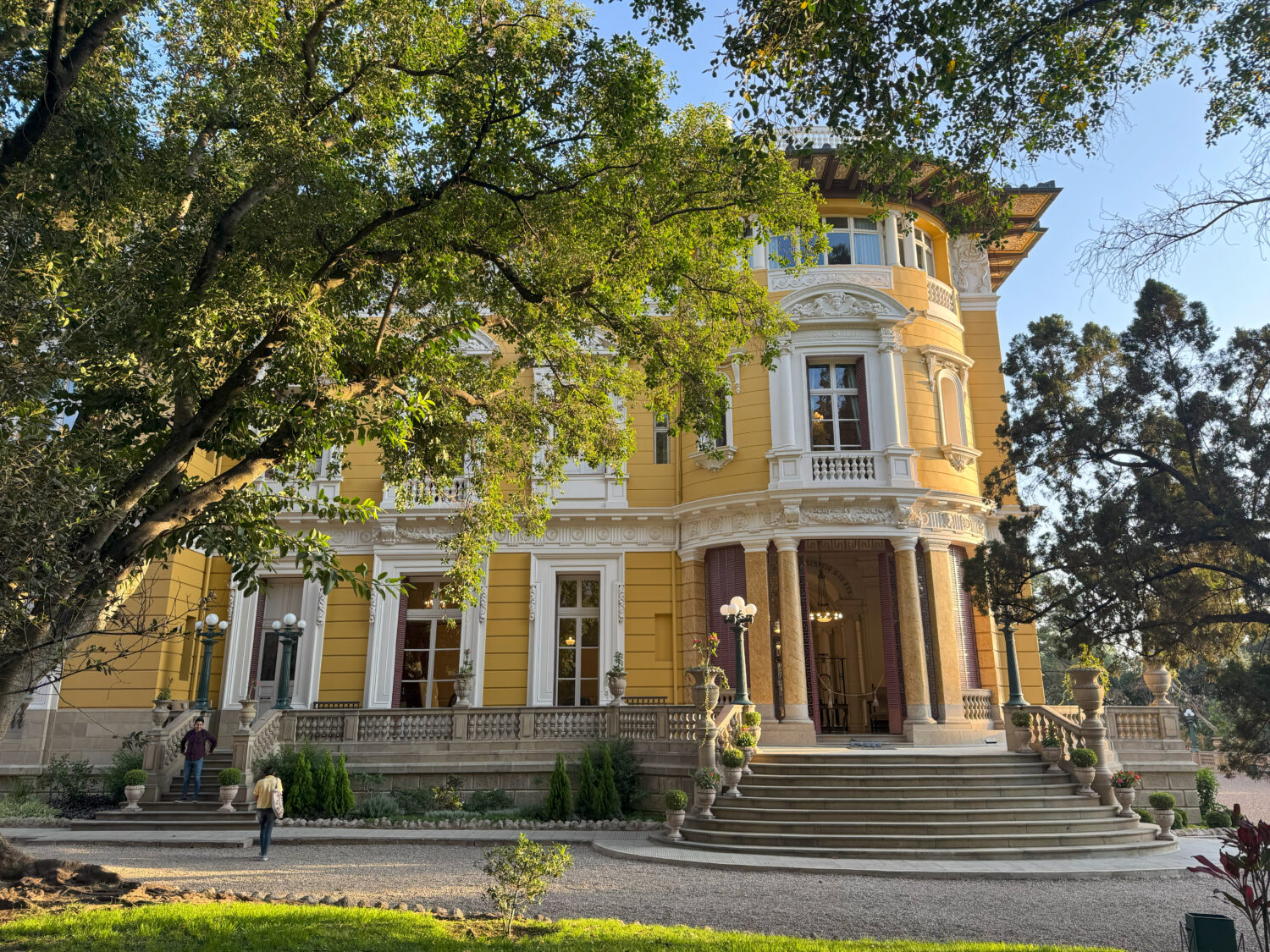
An architectural masterpiece nestled in Cochabamba, Palacio Portales embodies the legacy of Simón I. Patiño and the cultural dynamism of the Foundation. Behind its eclectic façades unfold an artistic centre, historic gardens and an active educational programme. A true bridge between history and contemporary creation, this emblematic site unites heritage and knowledge sharing for the benefit of the Bolivian public.
Located in the Queru Queru area of northern Cochabamba, the Palacio Portales is one of Bolivia’s most iconic buildings. Built between 1915 and 1927 at the request of Simón I. Patiño—known as the “Tin Baron”—it was designed by French architect Eugène Bliault. Although the Patiño family never lived there, this spectacular palace is a testament to a period of international openness and refined Bolivian elite culture. Since 1968, it has been managed by the Simón I. Patiño Foundation and now houses a public cultural and educational centre.
The Palacio Portales is a remarkable example of eclectic style, popular among European elites in the early 20th century. This style combines elements from various artistic and historical traditions in a single structure. The building blends Moorish, Florentine, Greek and Napoleonic influences, visible in both room layouts and interior decoration.
Construction materials were imported from Europe, such as Carrara marble and precious woods, all finely crafted by Bolivian artisans. The palace’s interiors are richly adorned: silk-covered walls, French-inspired frescoes, crystal chandeliers, marble fireplaces. The main salon’s painted plaster ceiling bears the initials “S.I.P.” — a mark of the patron’s identity.
Surrounding the main building are gardens designed by French landscape architect Prosper Remy. These lush green spaces are true oases blending art, nature and contemplation. The grounds feature classical statues representing Roman emperors, mythological figures, zodiac signs and cherubs. Fountains and ponds add a calming atmosphere to this meticulously maintained park. Biodiversity is also a key element, with a mix of native and imported plant species enriching the visitor experience.
Since its transformation by the Simón I. Patiño Foundation, the Palacio Portales has hosted the Simón I. Patiño Cultural and Educational Centre. The centre offers a diverse programme combining visual arts, music, theatre and educational activities.
Art exhibitions promote the work of contemporary Bolivian artists while also welcoming international projects. Conferences, workshops and meetings are organised to strengthen the connection between audiences and culture, fostering awareness of heritage and creativity. The site is also regularly transformed into a stage for concerts and performances, offering direct access to live arts in a prestigious setting.
Palacio Portales offers guided tours open to the public. Visitors can explore both the interior architecture and the gardens while learning about Simón I. Patiño’s life and his impact on Bolivia. Tours are available:
This format welcomes both tourists and Cochabamba residents, encouraging openness and shared heritage.
Palacio Portales is designed as a tool for the community. Open to all, it hosts educational programmes for local schools and actively supports artistic creation through competitions, residencies and temporary exhibitions. This bridge between past and present enables the Foundation to reinforce its work in education, culture and intergenerational dialogue.
Blending architectural heritage with cultural vitality, Palacio Portales is far more than a historical monument. It reflects the Simón I. Patiño Foundation’s commitment to keeping heritage alive by opening it up to society. Every stone, every artwork and every event contributes to making this space vibrant, intergenerational and forward-looking through culture.
1927: opening of Palacio Portales
1927
1968: opening of the Simón I. Patiño Cultural Centre
1968
Several tens of thousands of visitors each year
9998
By supporting Palacio Portales, you help preserve a unique building and strengthen its cultural mission. Each donation helps open its doors to a broader audience, support artistic creation and carry forward the living history of the Patiño Foundation.